The Suidlanders Emergency Plan (Noodplan) has been put together after many years of research and is written according to Civil Defence Law. It is considered as Civil Defence when a group is organised to administer a refugee flight situation. By becoming part of the Suidlander Emergency plan, you become part of a plan that will function legally according to international Civil Defence Law. We have staff countrywide who are personally prepared and receive training (or have received training) to be able to manage refugees, logistics, infrastructure, security etc. This is done by assigning the refugees to these critical functions as they arrive. Our members are preparing to become part of this Emergency Plan.
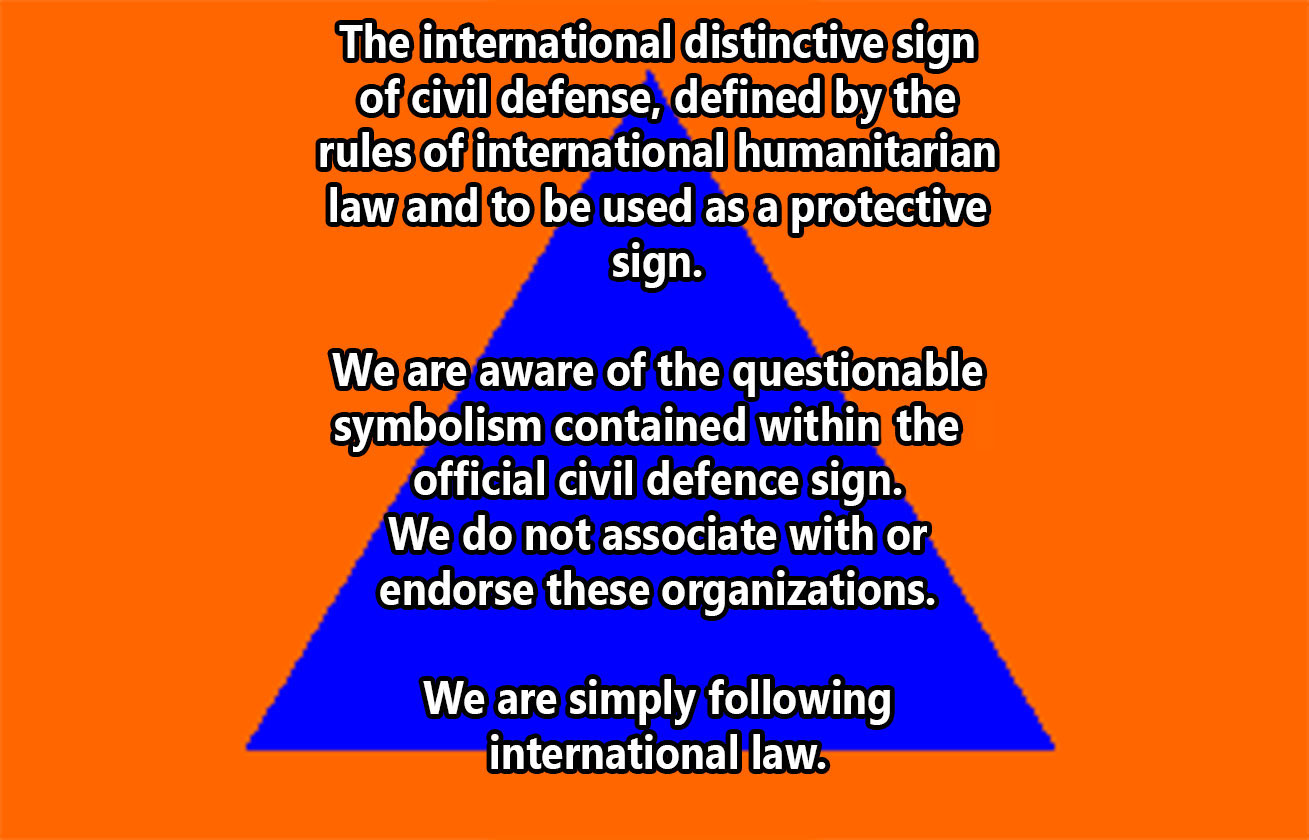
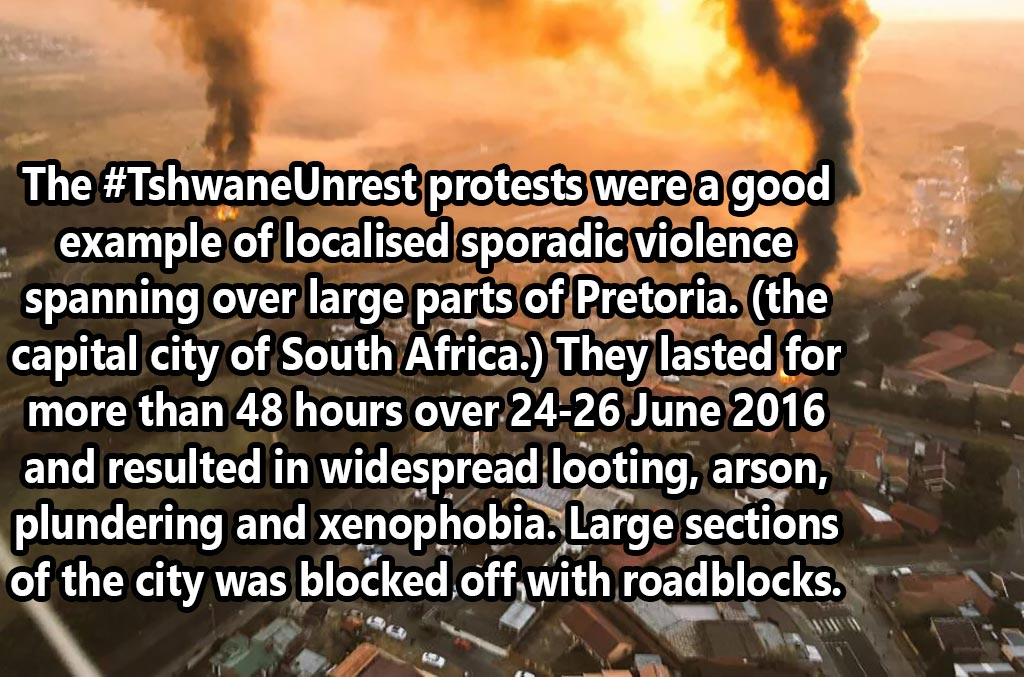
Some parts of South Africa can fall into anarchy while other areas remain relatively stable, (see ‘The Coming Revolution‘) therefore the Emergency Plan is written in such a way that we can start with an evacuation procedure in some parts of the country before national anarchy occurs. A pre-national evacuation phase is designed where action is required in smaller localized areas before the national emergency plan is activated. Pre-national phases concern, among other things, dangerous protest actions, how to prepare and be ready, house and home preparation and personal preparation. Phases 1-3 of the Emergency Plan are localized in your area and are coordinated locally. The onus rests on the member or group to evacuate or not. Phases 4-6 are implemented nationally by area headquarters. These area headquarters then function by information from national headquarters and are coordinated from there.
Summarized
- Part 1 – Sporadic violence or Anarchy (Pre-national)
- Phase 1 – Regrouping in nearby area
- Phase 2 – Administration outside danger zone
- Phase 3 – Safe places
- Part 2 – National anarchy and conflict
- Phase 4 – Yellow area admin and pass along
- Phase 5 – Reception and administration at safe area
- Phase 6 – Securing area inside set safe area
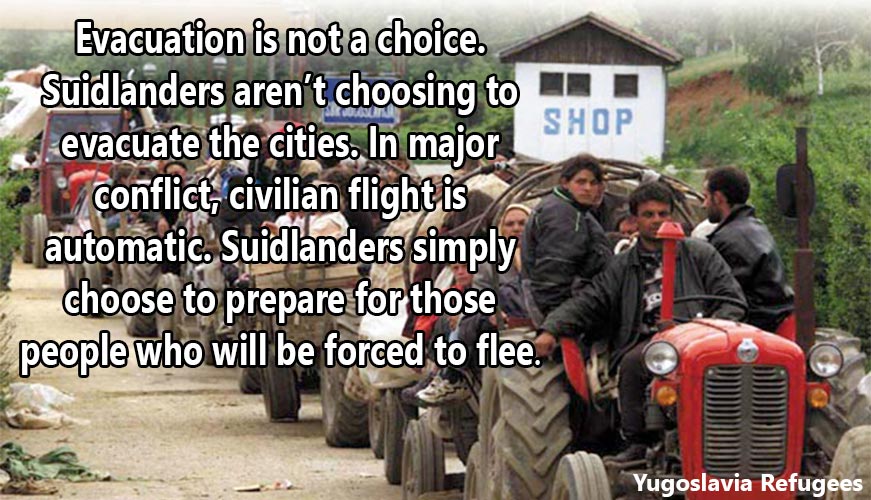
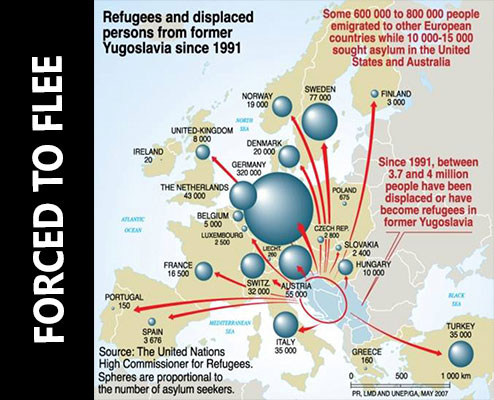
Part 1 – Sporadic Violence or Anarchy (Pre-national)
Sporadic violence can be expected as a precursor to national anarchy. When violence and/or anarchy occurs sporadically, areas, regions and provinces can expect to experience completely unique threats and dangers. The justified action required will depend on the unique circumstances in the area and might be very different from the justified action required in other areas. Thus evacuation procedures will depend on the severity of the crisis in that specific area. These actions are reversible. Therefore, if the situation in that specific area calms down and normalizes the members who participated in such an evacuation can easily return home. The locations of rendezvous points and thoroughfare points are confidential but must be made available to all members of the group in that phase. For security reasons safe areas are only known to key persons.
Our smartphone app app.suidlanders.co.za creates the opportunity for thousands of members to receive coordinates that will lead these members to safety. This creates an opportunity for members that cannot join a local group to become part of the Emergency Plan. These coordinates are not on the same safe routes or places that are used by our Suidlander groups but will be manned and managed by a local Suidlander group. These coordinates will bring these members to safe places where they can be picked up by other Suidlander members to become part of the Suidlander structures. These coordinates are confidential but are chosen in such a way that if an aggressor was to set up a roadblock or pursue refugees at these points they would immediately make themselves guilty of a war crime and it would be clear evidence of a planned aggression against refugees and that in turn would justify defence.
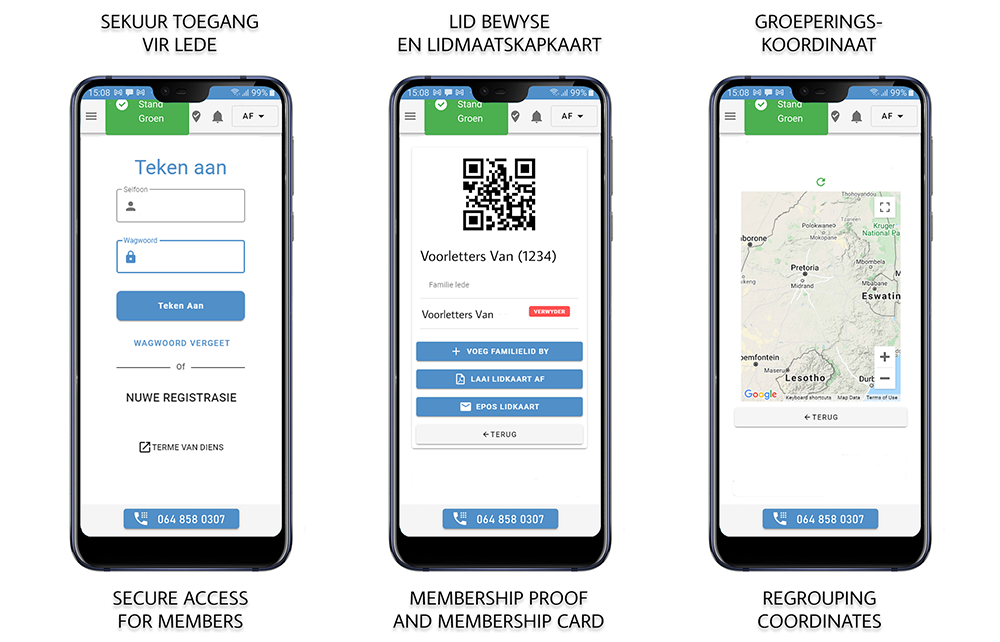
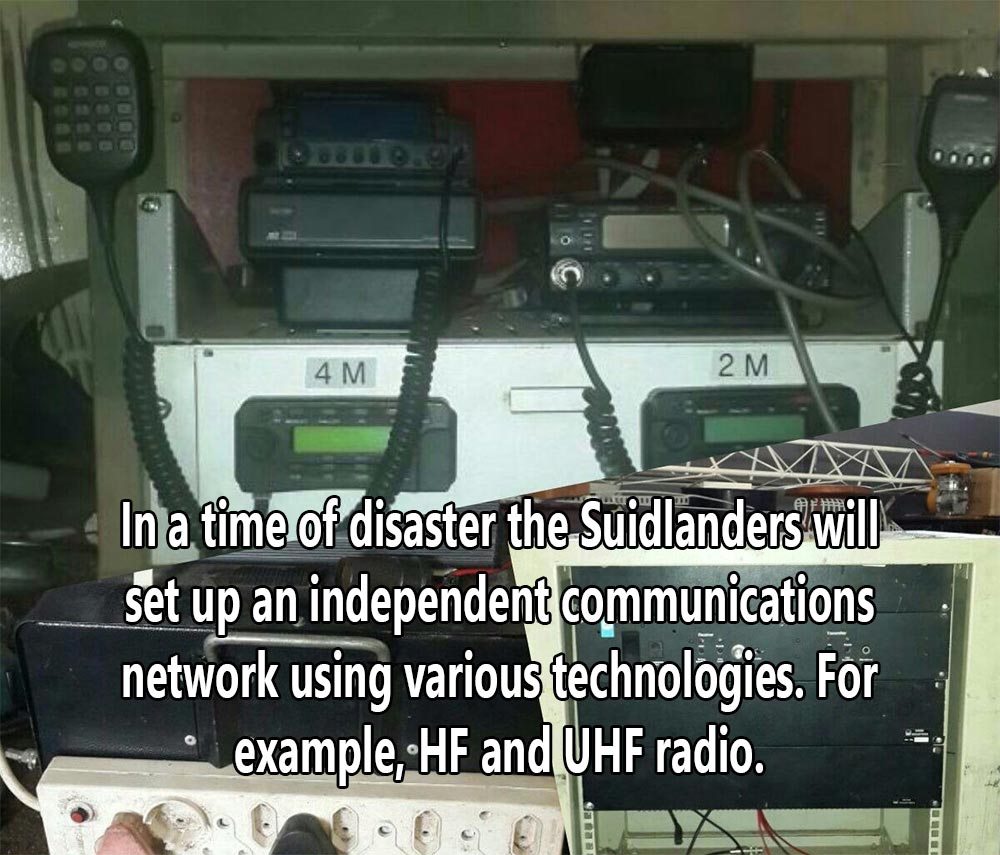
Phase 1 – Regrouping in nearby area
Move to pre-determined rendezvous points in close proximity of the affected area. These areas can be manned for as long as it is safe to inform the uninformed and non-members that decide to join the evacuation because of anarchy and/or violence to provide them with direction and assistance to the next rendezvous point. Signs can be left behind to indicate the direction of evacuation. All members must know these rendezvous points as well as the direction to phase 2.
Phase 2 – Administration outside danger zone
This phase serves as a thoroughfare point and as a source of information to refugees to reach the second safe area. At that safe area in this phase, people can stay for longer depending on the circumstances. If possible, refugees will be placed under leadership in certain positions and convoy groups will be formed. Radio and other communication structures will be set up. All members must be aware of these areas.
Phase 3 – Safe Places
Phase 3 is in a safe area where people can stay for an extended period of time. An example of such an area is a farm that has been arranged beforehand and on which certain preparations have been made. Water, camping, food and communications infrastructure are important in these areas. All members in phase 3 are sorted under various leadership.
- Provincial leader
- 5-10 Regional leaders
- Group leaders as required.
- Each up to ten families in a group
A group leader might have less than 10 families but no more. When it becomes more, new group leaders need to be chosen to form new groups. It is important to identify leaders as soon as possible. In phase 3 radio communication needs to be established with Regional HQ. Regional HQ will coordinate movement and will in turn communicate with National HQ.
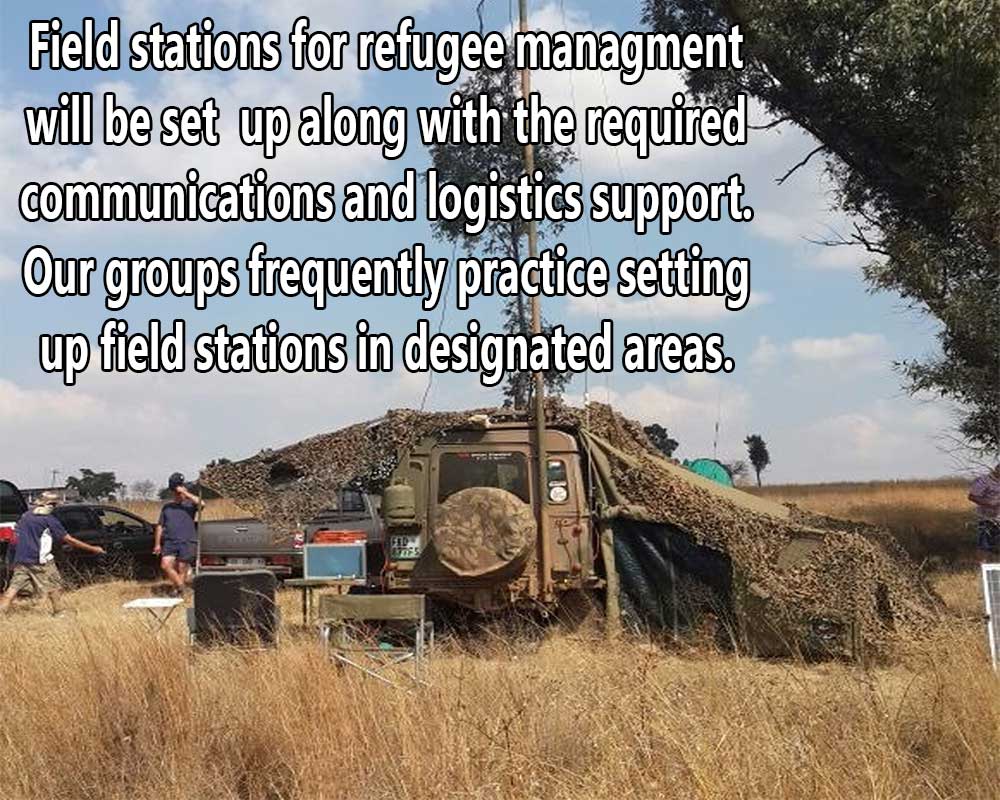
A city in conflict is always abandoned by non combatants
If the phase 3 area needs to be evacuated because of a threat, a new safe area can be identified by coordination between the various regional HQs and national HQ. All these actions happen sporadically in cooperation with other regional HQ. This means that there will be some areas where members are still at home and have not yet evacuated. All refugee communications will be direct with the regional HQ. This can be done with radios, or if possible, with cell phones. We will remain at phase 3 until the Suidlander national leadership gives the instruction to move to the next phase. All senior leadership, including regional and provincial will decide together whether or not to announce a national state of anarchy.
Part 2 – National violence and/or anarchy
Part 2 consists of an evacuation procedure where all regions and provinces are threatened by anarchy. This phase will not be reversible and will involve all members countrywide. All provinces within South Africa will be channeled to certain large areas across the country. These areas are predetermined, prepared and will then be manned. The purpose of this national leg of the Emergency Plan is to empower the refugees for security and self-reliance over a long period of time and in more than one large area in South Africa.
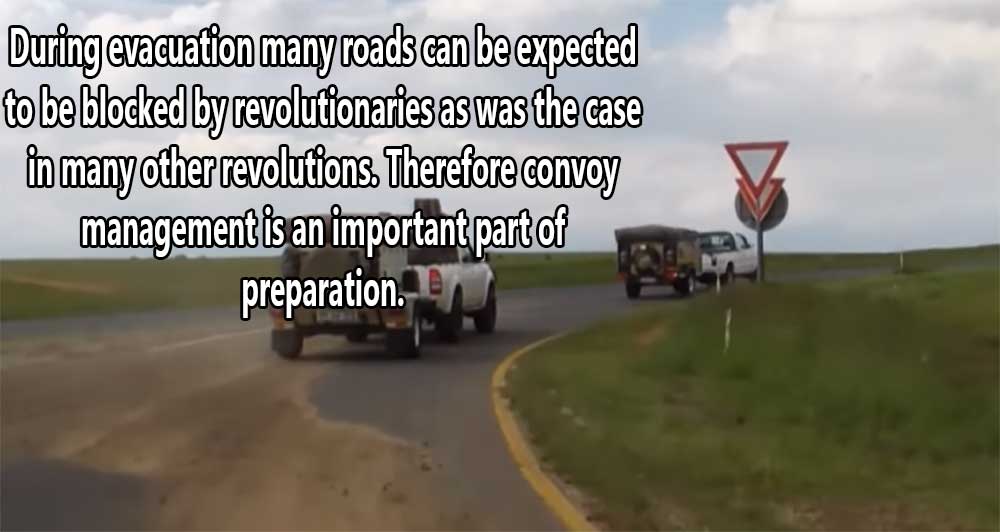
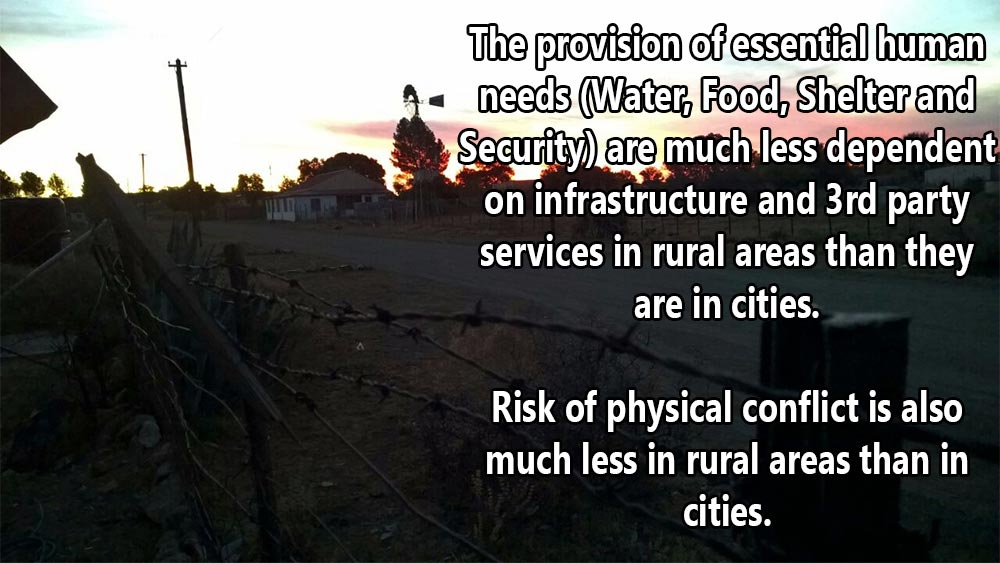
Phase 4
Members move from phase 3 safe areas to phase 4 regional receptions. On the way, depending on the route, people can report to administrative processing points. These points are simply thoroughfare points, but can be used as temporary stay overs depending on the circumstances. During phase 4 flight coordination will be managed by refugee managers and regional HQs who in turn communicate with with national HQ but national HQ will maintain a observational stance. Provincial leaders and their chosen confidants will be aware of the location of these points and areas.
Phase 5 – Reception and administration at Safe Area
This phase consists of reception at the safe area border and various processes and administration will be handled here. Refugee allocation and placement happens in this phase.
Phase 6 – Securing area inside set Safe Area
Phase 6 consists of certain predetermined rescue and empowerment actions to implement the long term goal of security and self-reliance. Staff will constantly be trained for these purposes.
Why not go to Europe? (See ‘The Future of the West’)
Genuine war refugees fleeing the conflict in the Ukraine have been denied asylum in Germany in 95% of cases (and will, from now on, all be refused that status)—while Angela Merkel’s government admits hundreds of thousands of “war refugees” from all over the non-white Middle East without question.
http://newobserveronline.com/white-war-refugees-not-allowed-in-german
The largest difference between the two parts of the Emergency Plan is the independent and localized nature of the first part in contrast to the national coordinated participation in the second part of the Emergency Plan. The first part is reversible and the second part is irreversible. The transition from the first part to the second part can only happen if all national Suidlander leadership unanimously decide so, after thorough classification of the intensity, geographical scope and total loss of control by government security forces. Suidlander leadership will under no circumstances act prematurely and evacuation instructions are followed as your own choice.




